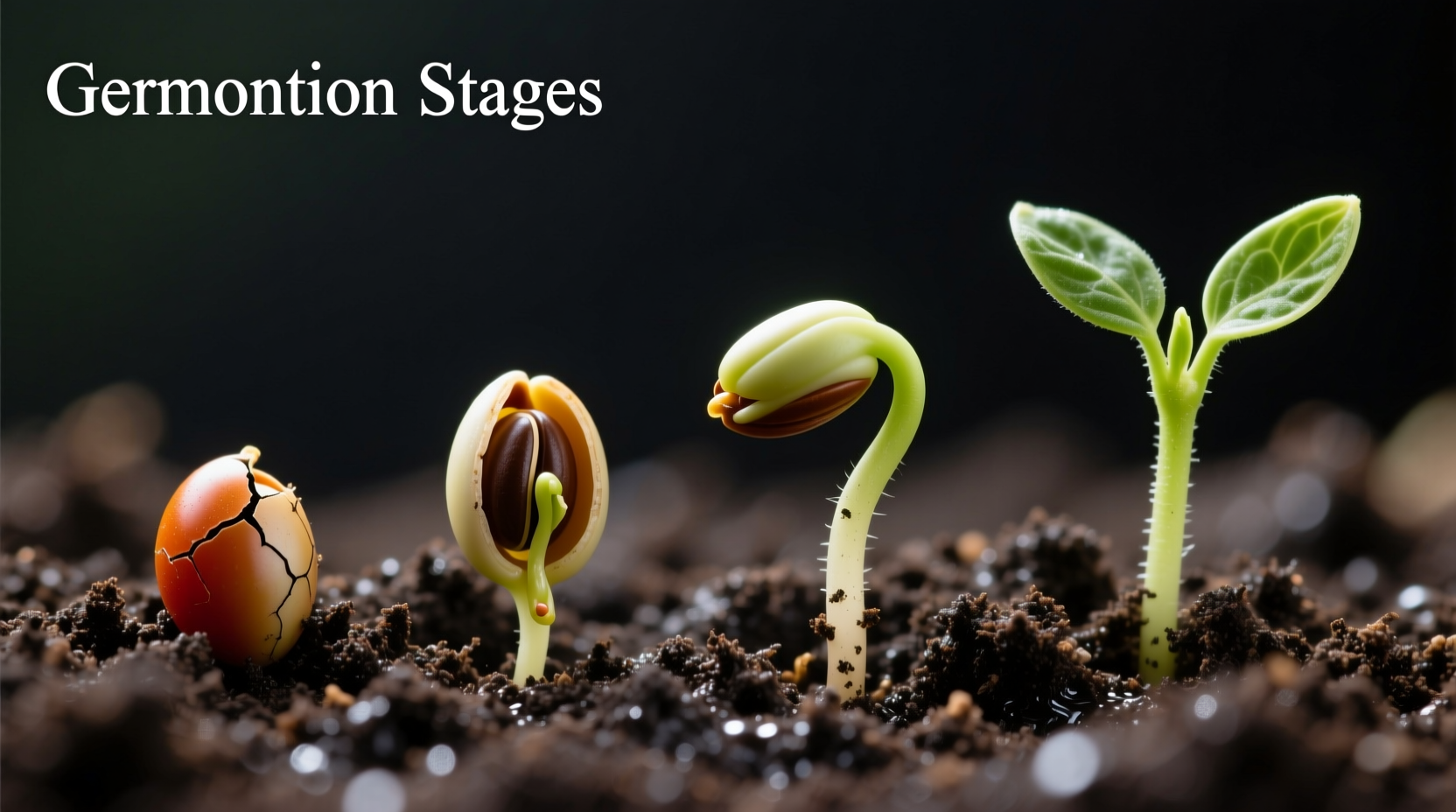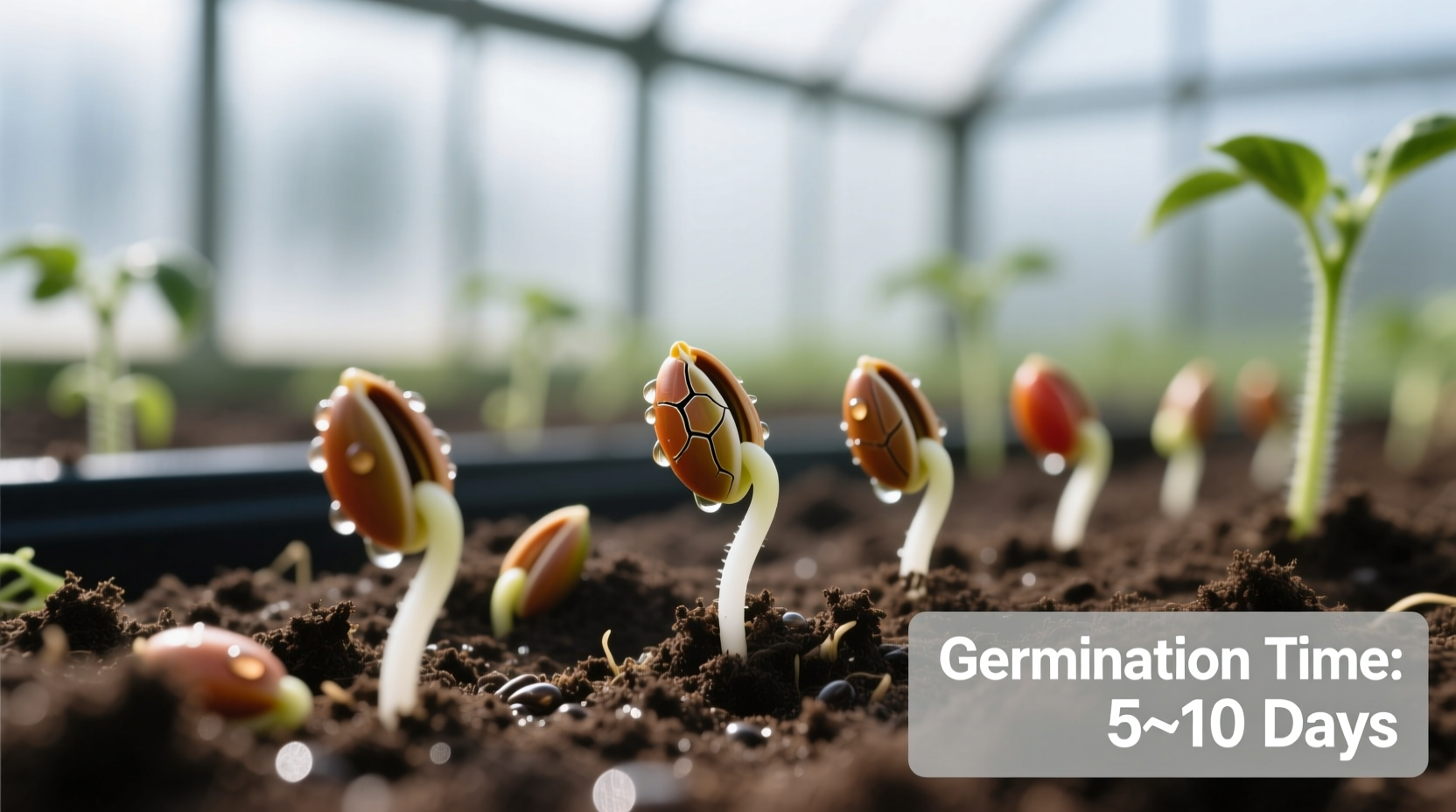Tomato seeds typically germinate in 5 to 10 days under optimal conditions. This timeframe can vary based on temperature, moisture levels, seed quality, and soil conditions. Understanding these variables helps gardeners achieve successful sprouting for a thriving tomato harvest.
Have you ever wondered why some tomato seeds sprout quickly while others take their sweet time? Whether you're starting your first garden or refining your greenhouse techniques, knowing exactly how long tomato seeds take to germinate makes all the difference between a flourishing crop and disappointing results. This guide delivers the precise information you need to optimize your seed-starting process, backed by horticultural science and practical growing experience.
The Tomato Seed Germination Timeline: What to Expect
Understanding the tomato seed germination process timeline helps set realistic expectations for your gardening efforts. Here's what happens beneath the soil surface during those critical first days:
Water absorption: Seeds swell as they soak up moisture, activating enzymes that break down stored nutrients.
Radicle emergence: The first visible sign - the taproot pushes through the seed coat, anchoring the seedling.
Hypocotyl arch formation: The stem begins pushing upward, forming a protective arch that pulls cotyledons through the soil.
Cotyledon appearance: The first "seed leaves" emerge above soil, signaling successful germination.

Key Factors That Determine Germination Speed
While the standard time for tomato seeds to sprout falls between 5-10 days, several environmental factors can accelerate or delay this process. Understanding these variables puts you in control of your seed-starting success.
Temperature: The Critical Catalyst
Tomato seeds germinate fastest within a specific temperature range. The optimal temperature for tomato seed germination directly impacts how quickly you'll see results:
| Soil Temperature | Germination Time | Success Rate |
|---|---|---|
| 80-85°F (27-29°C) | 4-6 days | Excellent (90%+) |
| 70-75°F (21-24°C) | 5-10 days | Good (75-85%) |
| 60-65°F (16-18°C) | 10-14 days | Fair (50-60%) |
| Below 55°F (13°C) | Rarely germinates | Poor (under 20%) |
This temperature data comes from research conducted by the University of Minnesota Extension, which has documented tomato cultivation practices for over 50 years. Their studies confirm that maintaining consistent soil temperature significantly improves both germination speed and seedling vigor.
Moisture Management: The Balancing Act
Proper moisture levels are crucial for how fast tomato seeds germinate. Seeds need consistent moisture but will rot if oversaturated. The ideal approach:
- Keep seed starting mix moist but not soggy (like a damp sponge)
- Cover containers with plastic to maintain humidity during initial germination
- Use bottom watering to avoid disturbing delicate emerging roots
- Reduce moisture slightly once cotyledons appear
Step-by-Step Guide to Accelerate Tomato Seed Germination
Follow these science-backed steps to achieve the fastest possible tomato seed sprouting time while maximizing your success rate:
Pre-Planting Preparation
- Seed selection: Choose fresh seeds (less than 2 years old) for highest viability
- Soil preparation: Use sterile seed starting mix rather than garden soil
- Container selection: Opt for cells with drainage holes to prevent waterlogging
Planting Technique
- Plant seeds 1/4 inch deep - deeper planting delays emergence
- Mist soil surface after planting to avoid displacing seeds
- Cover containers with humidity dome or plastic wrap
- Place in warm location (75-80°F) - consider a seedling heat mat
Post-Planting Care
- Check daily for moisture and emerging seedlings
- Remove cover immediately upon seeing green growth
- Provide 14-16 hours of bright light once seedlings emerge
- Maintain consistent moisture without overwatering
Troubleshooting Common Germination Problems
When your tomato seeds aren't sprouting as expected, these solutions address the most frequent issues gardeners encounter:
Problem: Seeds haven't sprouted after 14 days
Possible causes:
- Temperature too low (below 60°F/15°C)
- Old or poor-quality seeds
- Overwatering causing seed rot
- Planting too deep
Solutions:
- Use a soil thermometer to verify temperature
- Start new batch with fresh seeds
- Allow soil to dry slightly between waterings
- Ensure planting depth is no more than 1/4 inch
Problem: Uneven germination
When some seeds sprout while others don't, this typically indicates inconsistent moisture or temperature across your seed tray. Create uniform conditions by:
- Using a heat mat for consistent bottom warmth
- Watering from below rather than top
- Rotating trays daily for even light exposure
- Using a humidity dome to maintain consistent moisture
When to Transplant Your Tomato Seedlings
Knowing when tomato seeds have fully germinated helps determine the perfect transplant timing. Wait until:
- True leaves appear (the second set of leaves after cotyledons)
- Seedlings have developed 2-3 sets of true leaves
- Stems are sturdy enough to handle without damage
- Nighttime temperatures consistently stay above 50°F (10°C)
Transplanting too early can damage delicate root systems, while waiting too long causes root binding. The Old Farmer's Almanac recommends transplanting when seedlings reach 3-4 inches tall with multiple sets of true leaves for optimal growth.











 浙公网安备
33010002000092号
浙公网安备
33010002000092号 浙B2-20120091-4
浙B2-20120091-4